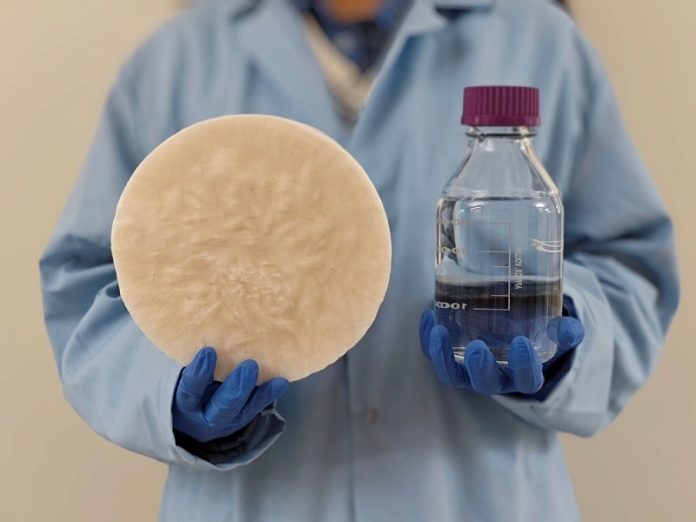
Credit: University of Texas at Austin.
Imagine making clean drinking water from the air using food scraps, seashells, or twigs. That’s exactly what a team of researchers at The University of Texas at Austin has done.
They’ve developed a new, eco-friendly material that can turn all sorts of natural waste into powerful water collectors—called sorbents—that pull moisture from the air, even in very dry places.
This new material is called a biomass hydrogel, and it’s created using a special method that transforms almost any plant-based or natural material into something that can soak up water from the air.
The team, led by Professor Guihua Yu, published their findings in the journal _Advanced Materials_.
In real-world tests, this hydrogel produced over 14 liters (about 3.75 gallons) of clean water per kilogram each day.
That’s a big improvement over older materials, which typically produce only 1 to 5 liters per kilogram.
The secret lies in a two-step process that gives natural materials special abilities. First, it makes the materials hygroscopic, meaning they easily absorb moisture.
Second, it makes them thermoresponsive, meaning they release the water when warmed slightly.
Materials like cellulose (from plants), starch (from food), or chitosan (from shells) can all be used. That means this system can turn everyday waste into a water-gathering tool.
Unlike many synthetic materials used for similar purposes—which often rely on oil-based chemicals and need lots of energy—this new hydrogel is natural, biodegradable, and low-energy.
It’s also easy to scale up, meaning it could be produced in large amounts and used in homes, farms, or emergency situations.
“This breakthrough gives us a way to collect water from the air using things we normally throw away,” said Weixin Guan, the lead researcher and a doctoral student at UT Austin. “It’s sustainable, simple, and it can work anywhere.”
Professor Yu has been working for years on ways to make clean water more accessible, especially for people in dry or remote areas.
He’s also developed water-generating hydrogels for farming and emergency use. This latest version is one of the most promising, because it works so well and can be made from common materials.
The team is now designing portable water harvesters, self-watering systems for plants, and emergency water devices that could help people around the world. Their goal is to bring this technology out of the lab and into the real world.
“Getting clean water shouldn’t be complicated,” said Yaxuan Zhao, another member of the team. “With this gel, we can make water from air—anytime, anywhere—using the natural materials all around us.”